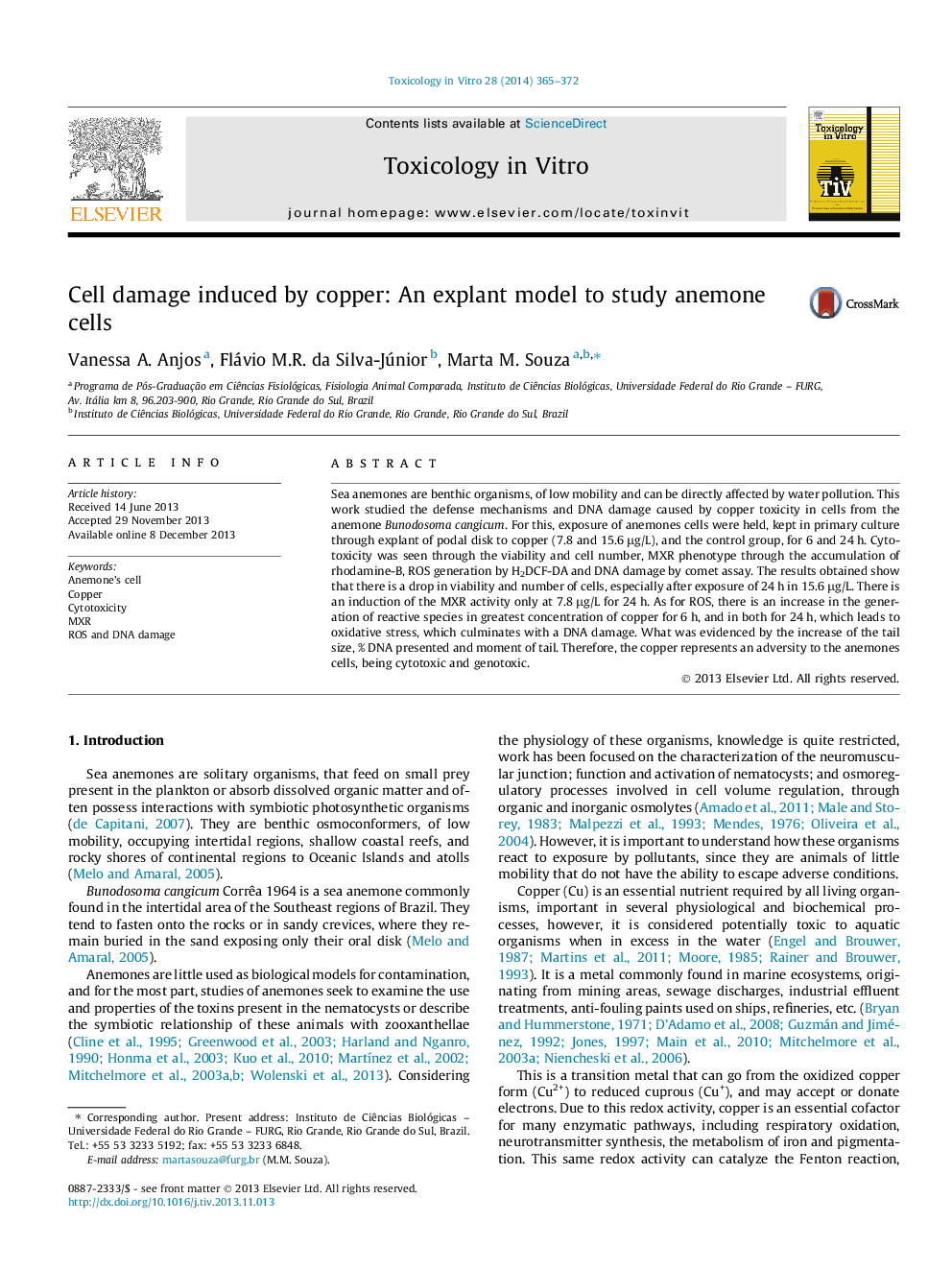| Article ID | Journal | Published Year | Pages | File Type |
|---|---|---|---|---|
| 5861875 | Toxicology in Vitro | 2014 | 8 Pages |
Abstract
Sea anemones are benthic organisms, of low mobility and can be directly affected by water pollution. This work studied the defense mechanisms and DNA damage caused by copper toxicity in cells from the anemone Bunodosoma cangicum. For this, exposure of anemones cells were held, kept in primary culture through explant of podal disk to copper (7.8 and 15.6 μg/L), and the control group, for 6 and 24 h. Cytotoxicity was seen through the viability and cell number, MXR phenotype through the accumulation of rhodamine-B, ROS generation by H2DCF-DA and DNA damage by comet assay. The results obtained show that there is a drop in viability and number of cells, especially after exposure of 24 h in 15.6 μg/L. There is an induction of the MXR activity only at 7.8 μg/L for 24 h. As for ROS, there is an increase in the generation of reactive species in greatest concentration of copper for 6 h, and in both for 24 h, which leads to oxidative stress, which culminates with a DNA damage. What was evidenced by the increase of the tail size, % DNA presented and moment of tail. Therefore, the copper represents an adversity to the anemones cells, being cytotoxic and genotoxic.
Keywords
Related Topics
Life Sciences
Environmental Science
Health, Toxicology and Mutagenesis
Authors
Vanessa A. Anjos, Flávio M.R. da Silva-Júnior, Marta M. Souza,
